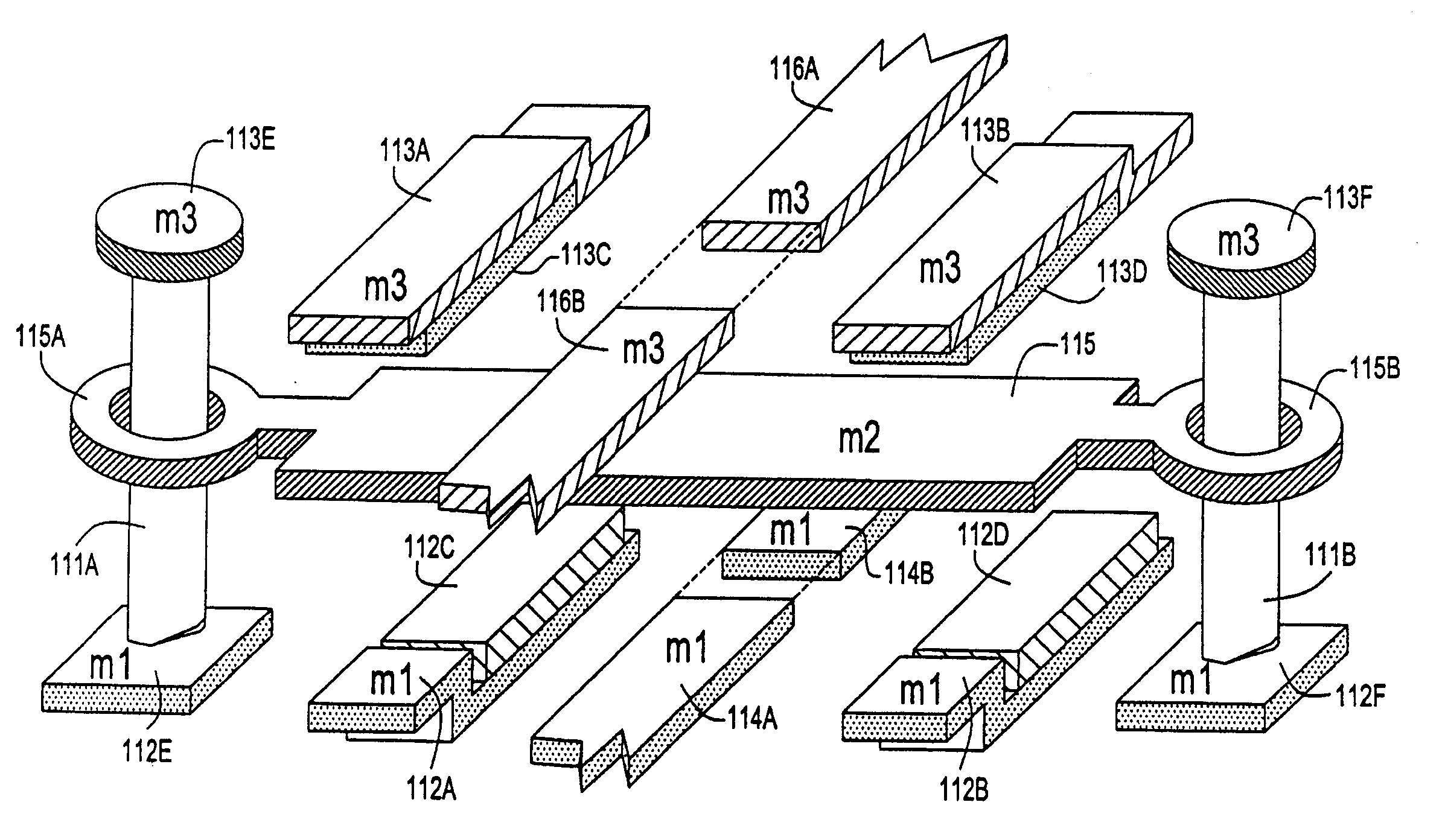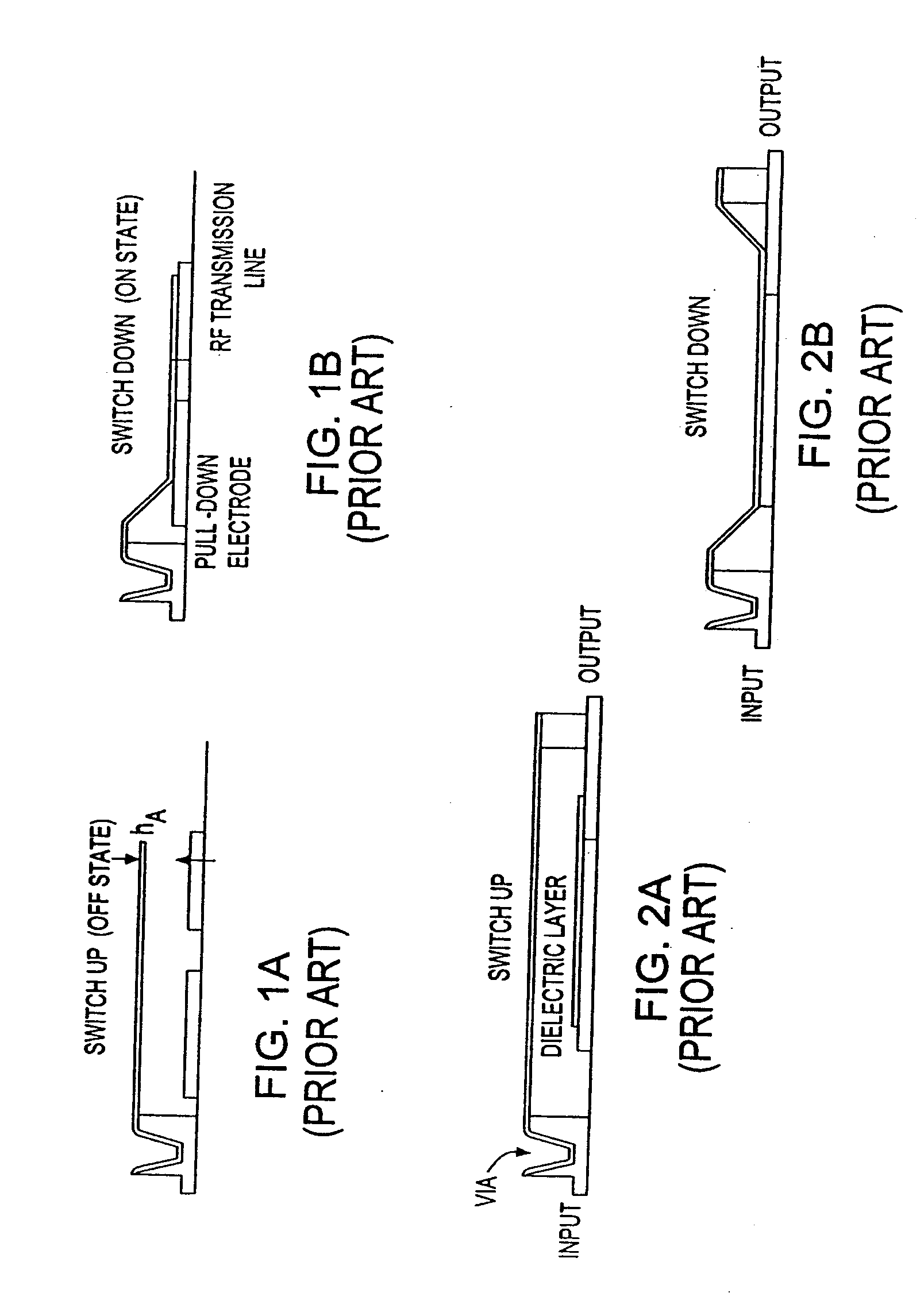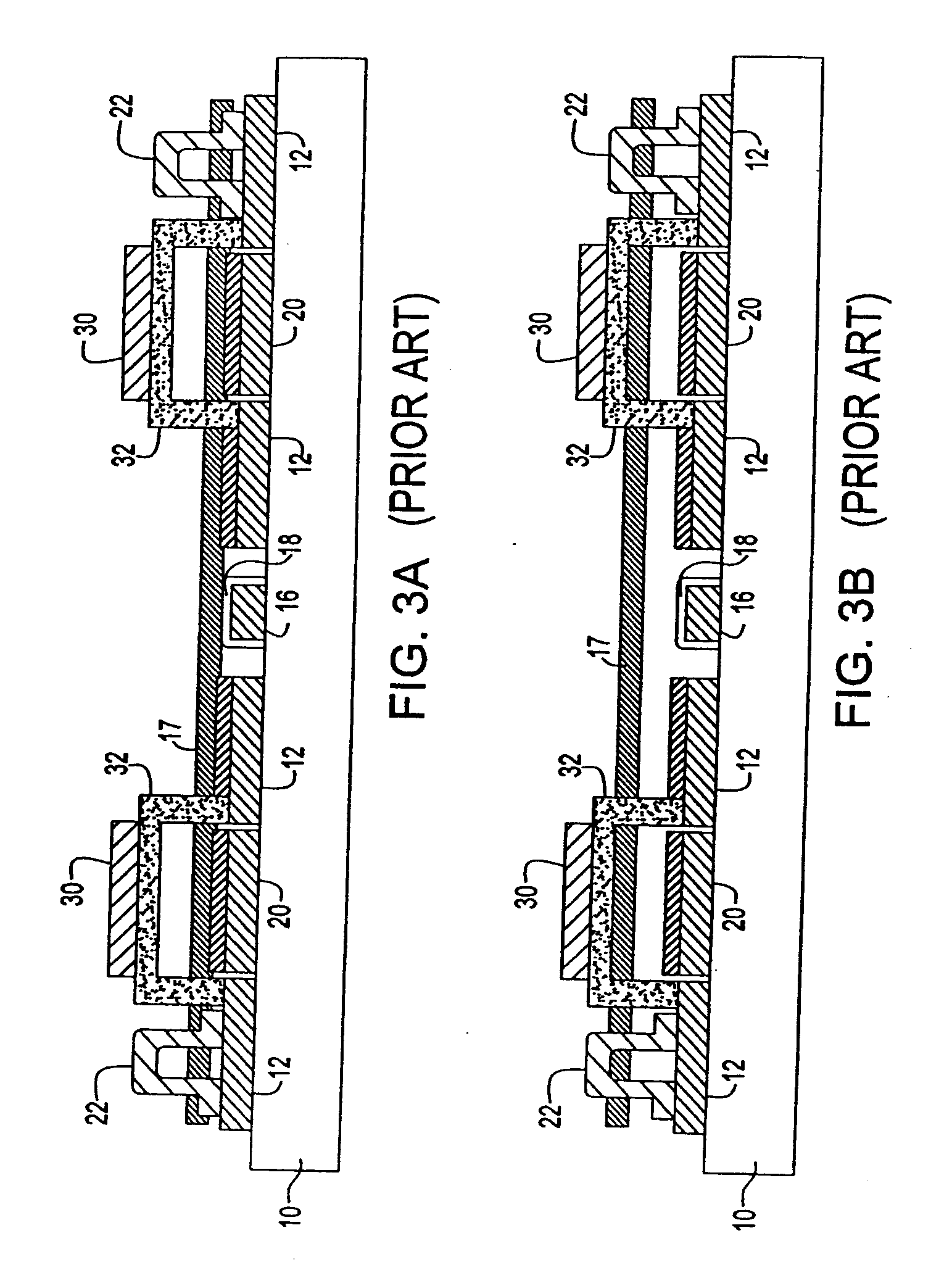Structure and method of fabricating a hinge type MEMS switch
a technology of hinge type and switch, applied in the direction of magnets, relays, magnetic bodies, etc., can solve the problems of no reference, design also requires a relatively high voltage, and the inability to restore the switch to its original sta
- Summary
- Abstract
- Description
- Claims
- Application Information
AI Technical Summary
Benefits of technology
Problems solved by technology
Method used
Image
Examples
Embodiment Construction
[0030] Referring now to the drawings and, more particularly, to FIG. 4 there is shown a three dimensional view of the hinge-type switch of the present invention.
[0031] As previously described, the MEMS switch is activated by a low actuation voltage, which has the advantage of making the switch compatible with voltages that are characteristic of semiconductor devices, in particular CMOS technology. This is made possible by the device not having to rely on a deformable moveable beam, that is typical of, e.g., cantilever MEMS switching devices and the like.
[0032] Still referring to FIG. 4, the structure is shown consisting of two guiding posts 111A and 111B, each formed by a column terminating, respectively, in a bottom and a top cap. The top cap is made of third metal (m3), preferably, having a size approximately 50% larger than the cross-sectional area of the column forming the post. The bottom cap is made of first metal (m1), which size, preferably, approximates the size of the to...
PUM
| Property | Measurement | Unit |
|---|---|---|
| operating voltage | aaaaa | aaaaa |
| actuation voltage | aaaaa | aaaaa |
| actuation voltage | aaaaa | aaaaa |
Abstract
Description
Claims
Application Information
 Login to View More
Login to View More - R&D
- Intellectual Property
- Life Sciences
- Materials
- Tech Scout
- Unparalleled Data Quality
- Higher Quality Content
- 60% Fewer Hallucinations
Browse by: Latest US Patents, China's latest patents, Technical Efficacy Thesaurus, Application Domain, Technology Topic, Popular Technical Reports.
© 2025 PatSnap. All rights reserved.Legal|Privacy policy|Modern Slavery Act Transparency Statement|Sitemap|About US| Contact US: help@patsnap.com



